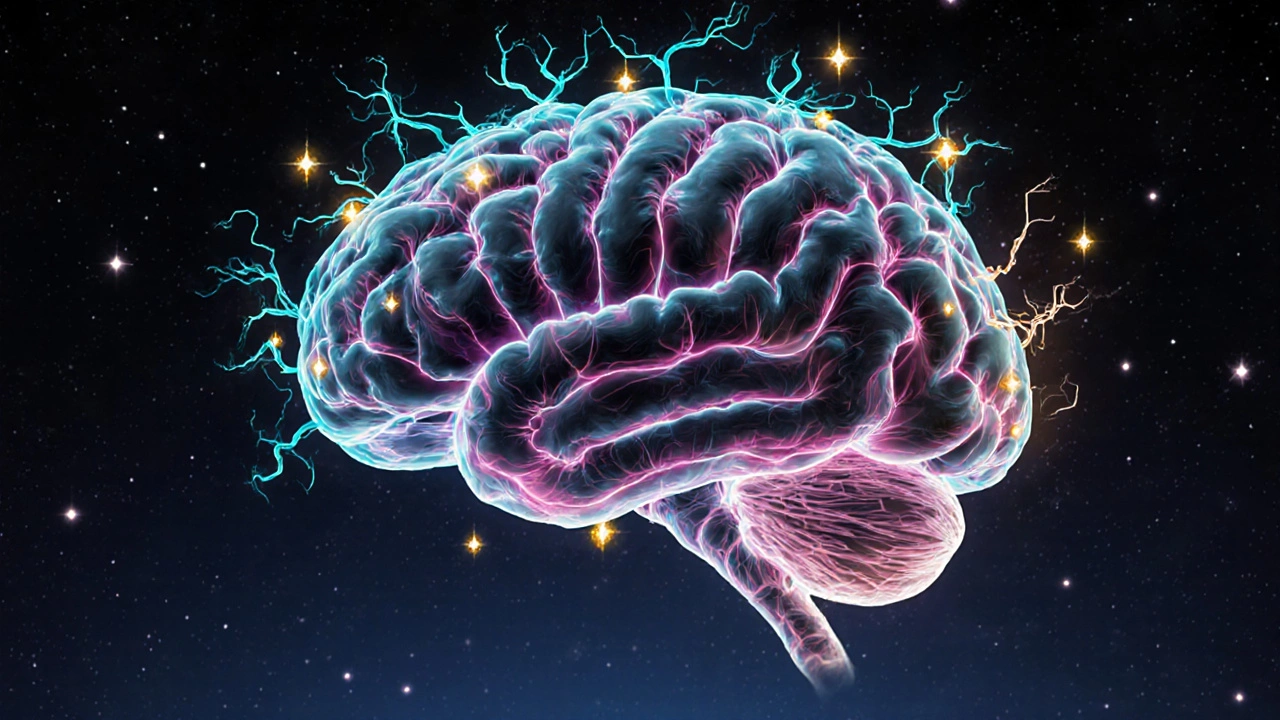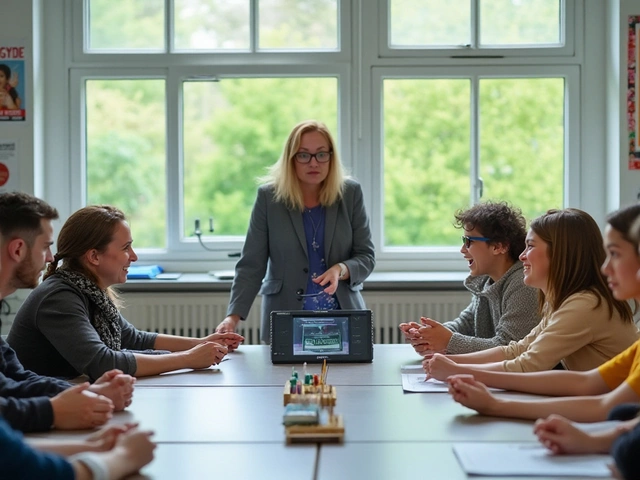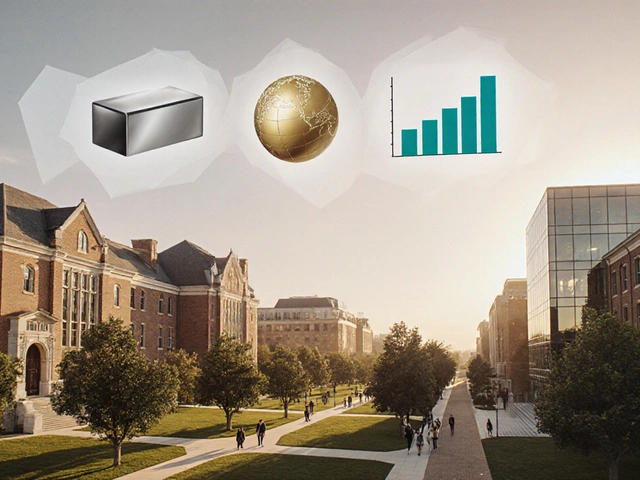Adult Learning Potential Calculator
How to Use This Calculator
This tool estimates your learning potential based on age, habits, and strategies that align with adult brain science. Enter your details to see how you can optimize your learning efficiency using crystallized intelligence and other proven methods.
Learning Potential Score
0%Your learning potential score based on your inputs.
Personalized Recommendations
Your tailored strategies to maximize learning efficiency.
Key Takeaways
- Age‑related changes in the brain affect speed, memory, and attention, but knowledge and experience keep growing.
- Neuroplasticity never disappears; it just needs more stimulus and recovery time.
- Regular exercise, good sleep, and purposeful practice can offset many learning hurdles.
- Focus on strategies that match your brain’s strengths (like using crystallized intelligence) for faster progress.
Ever wonder why picking up a new language feels smoother in your teens than in your thirties? The answer isn’t “you’re lazy” - it’s biology, lifestyle, and the way the brain reallocates resources over time. Below we break down the key reasons, the science behind them, and practical ways to keep your brain sharp for any new skill.
Cognitive aging is a natural, gradual shift in how the brain processes, stores, and retrieves information as we grow older. While the term sounds daunting, it simply describes a set of changes that can be managed with the right habits.
How the Brain Changes After 20
From your early twenties to your sixties, several core brain functions evolve. The most relevant for learning are:
- Neuroplasticity the brain’s ability to form new neural connections declines in sheer volume but remains alive. In youth, a single exposure can create a strong synapse; later, it often takes repetition and richer context.
- Working memory the short‑term storage space for information needed for a task shrinks modestly, making it harder to juggle multiple pieces of data at once.
- Processing speed the rate at which the brain interprets incoming information slows, so tasks that felt instant in your twenties now require a few extra seconds.
- Crystallized intelligence the accumulated knowledge and experience you’ve built over a lifetime actually increases, providing a powerful backup for new learning.

Why Speed and Memory Take a Hit
Two main biological factors drive the slowdown:
- Dopamine reduction: Dopamine, the neurotransmitter linked to reward and motivation, drops about 10% each decade. Lower dopamine means the brain’s “learning reward” signal isn’t as strong, so you may need more external motivation.
- Myelin degradation: Myelin is the fatty sheath that insulates nerve fibers for fast signal transmission. As we age, myelin integrity wanes, causing latency in neural communication.
Both changes affect the fluid part of intelligence - the ability to solve novel problems quickly. That’s why a 50‑year‑old might take longer to master a new coding language than a 20‑year‑old, even with similar study time.
What Stays Strong - and Even Grows
Good news: not everything goes downhill. Crystallized intelligence leverages your existing knowledge base, allowing you to learn more efficiently through analogies and patterns continues to rise well into your seventies. This means adults can often learn faster than teens when the material connects to real‑world experience.
Another bright spot is semantic memory - the long‑term storage of facts, vocabulary, and concepts. It’s why you can recall historical dates or a favorite recipe after years of not using them.
Practical Strategies to Boost Adult Learning
Understanding the science is half the battle. The other half is applying tactics that align with how an adult brain works.
| Aspect | Fluid Intelligence | Crystallized Intelligence |
|---|---|---|
| Defined as | Ability to solve new problems quickly | Knowledge accumulated over life |
| Typical trend with age | Gradual decline | Steady increase |
| Best learning tactics | Repetition, speed drills, varied contexts | Analogies, real‑world examples, linking to past experience |
| Neural basis | Prefrontal cortex, dopamine pathways | Temporal lobes, semantic networks |
Below are five evidence‑backed habits that protect fluid abilities while leveraging crystallized strengths.
- Chunk & Connect: Break new material into small “chunks” and immediately tie each chunk to something you already know. This leverages crystallized intelligence and reduces working‑memory load.
- Spaced Repetition: Space study sessions 24‑48 hours apart. Research from the University of California (2023) shows spaced practice restores dopamine response in older adults, making each review feel rewarding.
- Physical Activity: Aerobic exercise (30min brisk walking, cycling, or swimming) boosts myelin repair and neurogenesis in the hippocampus, directly enhancing memory formation.
- Sleep Hygiene: Aim for 7‑8hours of deep sleep. During slow‑wave sleep, the brain consolidates new synaptic connections, a process that becomes less efficient with age if sleep is fragmented.
- Mindful Stress Management: Chronic cortisol spikes shrink the prefrontal cortex. Short daily mindfulness sessions (5‑10min) have been shown to improve working‑memory capacity in adults over 60.
Following these steps consistently can make learning as you age feel less like a uphill battle and more like a steady climb.

Common Pitfalls & How to Avoid Them
Even with the right plan, many adult learners stumble over the same traps.
- Multitasking: Switching between email, social media, and study fragments attention. Focus on single‑task blocks of 25‑30minutes (the Pomodoro technique works well).
- Over‑reliance on Passive Consumption: Watching videos without note‑taking limits encoding. Pair passive input with active summarisation.
- Neglecting Review: The “forgetting curve” is steeper after 48hours. Schedule a quick 5‑minute recap after each session.
- Ignoring Physical Health: Skipping meals or staying sedentary cuts blood flow to the brain, reducing plasticity.
Next Steps for Different Learner Profiles
Identify which scenario matches you best, then pick the first action.
- Career‑Changer (30‑45): Enroll in a short, project‑based bootcamp that emphasizes real‑world case studies. Use the “Chunk & Connect” method to map each new tool to your existing industry knowledge.
- Retiree Pursuing a Hobby (60+): Join a community class (e.g., local art or language group). Pair group sessions with spaced‑repetition flashcards to cement new vocabulary.
- Busy Parent (35‑50): Integrate micro‑learning - 10‑minute audio lessons during commute - and schedule weekly “review Sundays” with the whole family.
Frequently Asked Questions
Does the brain keep making new neurons after 40?
Yes, neurogenesis continues in the hippocampus, the area tied to memory. The rate slows, but activities like aerobic exercise and learning new skills can boost it.
Can supplements improve learning in older adults?
Some studies point to omega‑3 fatty acids and vitaminD supporting brain health, but they’re not replacements for sleep, exercise, and active learning.
How much practice is needed to master a new skill after 50?
The classic 10,000‑hour rule still applies, but spaced, purposeful practice beats marathon sessions. Aim for 30‑45minutes daily with regular reflection.
Is it normal to forget what I just read?
Yes. Working‑memory capacity naturally declines, so the brain needs more consolidation time. Summarise the paragraph in your own words and revisit after a short break.
What role does diet play in adult learning?
A balanced diet rich in antioxidants, B‑vitamins, and omega‑3s supports neuronal health. Skipping meals can cause glucose drops, leading to attention lapses.






